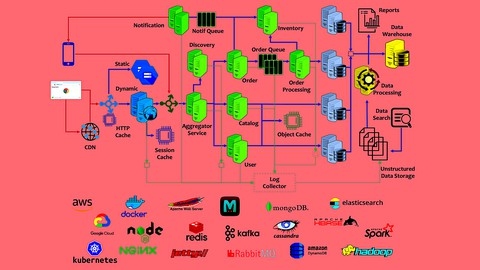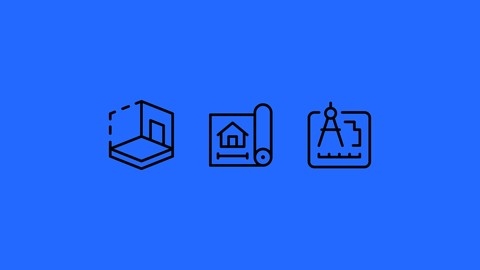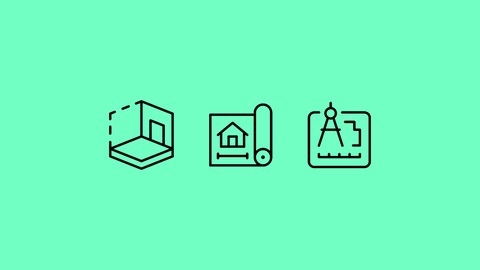Software architecture is the backbone of any successful software application.
It’s the blueprint that guides developers in building robust, scalable, and maintainable systems.
By understanding the principles of software architecture, you can design applications that are not only functional but also adaptable to future changes and capable of handling increasing complexity.
Learning software architecture can significantly enhance your skills as a developer and open doors to more senior roles in the tech industry.
However, finding a comprehensive and engaging software architecture course can be a challenge.
With a plethora of options available online, it’s easy to feel overwhelmed by the sheer volume of choices.
You’re searching for a course that strikes the right balance between theoretical knowledge and practical application, taught by experienced instructors who can guide you through the intricacies of designing complex systems.
For the best software architecture course overall on Udemy, we recommend SOLID Principles: Introducing Software Architecture & Design.
This course provides a comprehensive introduction to the SOLID principles, which are fundamental concepts for building well-structured and maintainable software.
Through practical examples and real-world scenarios, you’ll learn how to apply these principles to create code that is both robust and adaptable.
While this is our top recommendation, we understand that you might be looking for something more specific to your needs or learning style.
Therefore, we’ve compiled a list of other exceptional software architecture courses on Udemy that cater to different levels of expertise and areas of focus.
Keep reading to discover the perfect course to elevate your software architecture skills.
SOLID Principles: Introducing Software Architecture & Design
This course dives deep into the SOLID principles, foundational concepts for any software developer wanting to build better software.
You begin with the Single Responsibility Principle, learning how to keep your code clean and efficient with cohesion and coupling.
Live coding sessions let you apply these principles in real-time.
You then explore the Open Closed Principle, learning how to future-proof your code by making it easily extendable without altering existing code.
The course uses real-world examples and code snippets to illustrate this.
Next, the Liskov Substitution Principle teaches you how to create interchangeable code modules with subtypes and base types, using the “Tell, Don’t Ask” principle.
The Interface Segregation Principle is next, where you discover how to design efficient, client-specific interfaces.
This leads to cleaner code and avoids bulky interfaces.
Finally, you learn about the Dependency Inversion Principle and how to write flexible, reusable code with techniques like Dependency Injection and Inversion of Control.
This course gives you the tools and knowledge to design software that is robust and maintainable.
Software Architecture & Design of Modern Large Scale Systems
This course equips you with the skills to design and build systems capable of handling massive user bases and data volumes.
You will begin by establishing a strong understanding of software architecture principles, including system requirements, quality attributes, and design drivers.
You will explore essential concepts like performance, scalability, availability, and fault tolerance, gaining a deep understanding of their significance in large-scale systems.
You will then dive into the critical building blocks of large-scale systems, such as load balancing, DNS, API gateways, and content delivery networks (CDNs).
Through real-world examples and case studies, you will learn how these components work together to ensure seamless operation, even with high traffic.
The course also covers different storage solutions, from traditional relational databases to modern NoSQL databases, equipping you with the knowledge to choose the best option for your specific needs.
Finally, you will explore popular software architecture patterns, including multi-tier architecture, microservices architecture, and event-driven architecture.
You will learn to apply these proven frameworks to design complex systems while ensuring flexibility and scalability.
The course culminates with practical design exercises, giving you the opportunity to apply your knowledge to real-world scenarios, such as designing a scalable discussion forum or a robust e-commerce platform.
Software Architecture & Technology of Large-Scale Systems
This course guides you through a transformation from developer to architect, equipping you with the skills to build and manage large-scale systems.
You begin by understanding how to design for performance, tackling challenges such as network and disk access latency and minimizing latency in CPU processing and memory access.
You also explore concepts like caching, concurrency, and learn to apply principles like Amdahl’s Law.
You then dive into scalability, understanding both vertical and horizontal approaches.
The course explains techniques like replication and database partitioning, teaching you how to handle increasing workloads effectively.
You discover how to leverage specialized services, including technologies like SOAP and REST, and delve into the world of microservices and tools like Kafka and NoSQL.
The course then emphasizes reliability, teaching you how to build resilient systems that withstand failures.
You learn about fault tolerance, redundancy, and strategies for recovering from failures, including concepts like health checks and failover mechanisms.
You examine different fault models and understand how to design for high availability in distributed systems.
Security is paramount in today’s world, and the course equips you with the knowledge to secure your systems effectively.
You delve into secure network protocols like TLS/SSL, explore encryption techniques like symmetric and public key encryption, and learn about authentication and authorization methods like OAuth2.
You also discover common vulnerabilities such as SQL Injection and Cross-Site Scripting and understand how to mitigate them.
Finally, the course covers the complexities of deploying large-scale systems.
You learn about modern deployment solutions, including containers (using tools like Docker), cloud platforms like AWS, and container orchestration using Kubernetes.
You explore deployment strategies like rolling updates, canary deployments, and blue-green deployments, gaining a comprehensive understanding of how to launch and manage your software in real-world environments.
Software Architecture Security - The Complete Guide
This course equips you with the skills to design and develop secure software architectures.
You begin with the fundamentals of software security, learning essential terminology and concepts.
You then explore threat modeling, a vital process for uncovering vulnerabilities in your software.
The course guides you through establishing robust security perimeters and implementing security measures across physical locations, networks, platforms, applications, and data.
You delve into secure communication protocols, secure coding practices, and the importance of safeguarding data.
You master the intricacies of authentication and authorization, including the OAuth2 protocol, a critical skill for modern software architects.
You will become proficient in integrating security considerations at every stage of the Software Development Life Cycle (SDLC).
You gain practical experience with various testing techniques, such as penetration testing and load testing.
You learn how to use these techniques to detect vulnerabilities and fortify your software’s resilience.
The course culminates with a real-world case study, demonstrating the application of these principles in a practical setting.
This provides you with valuable insights into building and maintaining secure software architectures in real-world scenarios.
Software Architecture Case Studies
This Software Architecture Case Studies course on Udemy provides a practical understanding of software architecture and its real-world applications.
You will learn how to take user requirements and design a well-structured architecture that ensures your software is robust, scalable, and maintainable.
The course uses four detailed case studies to walk you through the entire architecture process.
You will gain experience working with a variety of systems, such as logging services, data pipelines, and file-handling applications.
You will learn to map components, select technology stacks like AWS, and create architecture diagrams.
For example, in the logging service case study, you will learn about the Logging Service, View Service, and Employees Service and how to use queuing technology.
The course goes beyond the basics of software architecture to include valuable skills like supporting your team and writing clear architecture documentation.
You can join the Software Architects Community to further develop your skills.
This course will give you the experience and skills needed to become a confident software architect.
Software Architecture: REST API Design - The Complete Guide
This course takes you from the fundamentals of APIs to the complexities of RESTful design.
You will learn the importance of well-designed APIs and explore various types, including SOAP, GraphQL, and gRPC.
The curriculum focuses on REST and provides a deep dive into its architectural style, emphasizing how to structure requests and responses effectively.
You will become proficient in using tools like Postman and Beeceptor to interact with APIs and master the nuances of HTTP verbs like GET, POST, PUT, and DELETE.
The course guides you through crafting well-defined URLs, understanding response codes, and implementing authentication with OAuth and JWT.
Performance optimization is a key focus, covering techniques like caching, rate limiting, and monitoring.
You will learn how to use OpenAPI and Swagger for comprehensive API documentation and explore advanced topics like HATEOAS and API gateways.
Through this course, you gain practical skills and a strong theoretical foundation for building robust, scalable, and secure REST APIs.
Software Architecture for the Enterprise Architect
This course lays a solid foundation for anyone aiming to become an enterprise architect.
You’ll go beyond the surface-level understanding of the role and delve into the critical aspects of bridging business needs with software solutions.
The course doesn’t shy away from the technical side, equipping you with the essential skills of UML modeling, a language used for designing software systems.
You’ll gain hands-on experience creating diagrams – think Component Diagrams, Class Diagrams, and Deployment Diagrams – to visualize and understand complex systems like a seasoned architect.
These skills are crucial for anyone navigating the intricacies of software architecture.
You’ll also explore the diverse world of architectural patterns, from the classic Multi-Tiered Architecture to the modern Microservices Architecture and Domain Driven Architecture.
This diverse approach ensures you’re ready to tackle real-world challenges with a toolbox of proven solutions.
Beyond the technical aspects, the course emphasizes the importance of team dynamics, ensuring you can effectively lead and collaborate with developers and stakeholders alike.
You’ll learn how to analyze business requirements, assess quality attributes, and make strategic decisions that shape the software’s success.
It’s a stepping stone to a rewarding career in software development, providing you with the knowledge and skills to confidently lead complex projects and shape the future of software systems.
Software Architecture (SOLID) & Design Patterns in Java
This “Software Architecture (SOLID) & Design Patterns in Java” course teaches you how to build top-notch software using Java.
You start with the SOLID principles: Single Responsibility, Open/Closed, Liskov Substitution, Interface Segregation, and Dependency Inversion.
Through real-world examples and quizzes, you learn how to apply these principles to write cleaner and more manageable code.
Next, you discover Design Patterns — clever solutions to common coding problems.
You explore Creational patterns like Singleton, Factory, and Builder, which help you create objects in a structured way.
You then dive into Behavioral patterns like Strategy and Observer, which deal with how objects interact.
You also learn about Structural patterns such as Decorator, Facade, and Adapter, which help you organize your code effectively.
Finally, you explore different ways to structure your entire application.
You compare Monolithic architecture, where everything is bundled together, with Microservices architecture, where your application is split into smaller, independent parts.
You even get a bonus section on the Service Locator pattern and how it works with JNDI.
This course gives you a powerful toolkit for building well-designed, robust, and scalable Java applications.








